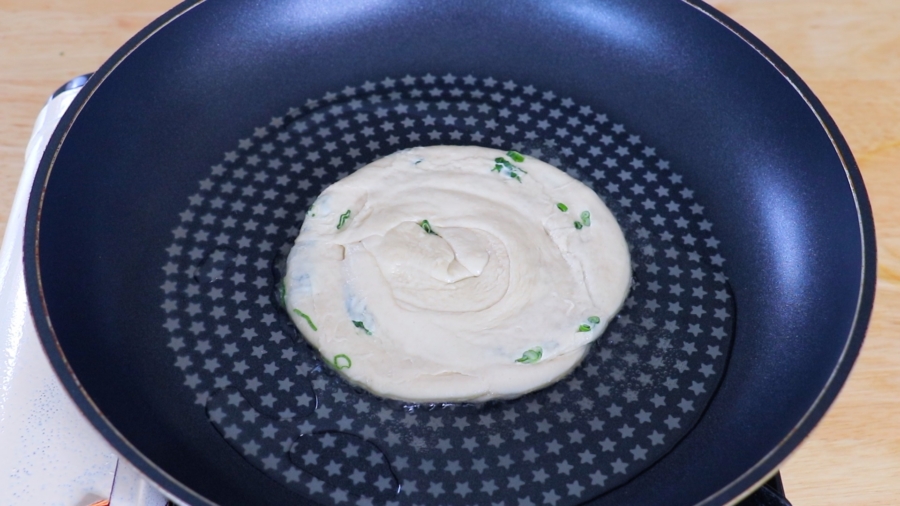Microplastics can be released from non-stick coated pans when cooking or washing, according to a new study from Australia.
Scientists from the University of Newcastle and the University of Flinders have been able to measure how many millions of plastic particles are released from the use of such pans.
A single surface crack of a Teflon-coated pan can release about 9,100 plastic particles, according to the study results.
By using a specialized imaging process called Raman, researchers found that in the microscale, a broken non-stick coating can release 2.3 million microplastics and nanoplastics.
Microplastics are pieces of plastic that measure less than 5 millimeters, while nanoplastics measure less than 1 micrometer.
“The non-stick coating material Teflon is generally a family member of PFAS,” said University of Newcastle researcher Cheng Fang in a statement.
Per- and poly-fluoroalkyl substances (PFAS) are chemical compounds that can be found in non-stick cookware, food packaging, insecticedes, waterproof clothing, and firefighting foam. They have been linked to cancer, according to CRCCare, which partly funded the research.
“Given the fact PFAS is a big concern, these Teflon microparticles in our food might be a health concern, so [it] needs investigating because we don’t know much about these emerging contaminants,” Fang said.
Flinders University researcher Youhong Tang said that people should be careful about the quality of the utensils they use in their daily life.
“It gives us a strong warning that we must be careful about selecting and using cooking utensils to avoid food contamination,” he said.
“More research is recommended to address the risk assessment of the Teflon microplastics and nanoplastics, given that Teflon is a family member of PFAS,” he added.

The researchers tested six different non-stick pots and pans—four new and two used—and mimicked a cooking or washing process, according to FOX5.
A steel spatula, a barbeque clamp, a stainless steel wool scrubber, and a wooden spatula were used in the tested cookware, FOX5 reported.
Fang said that the cookware could release plastic material, even if not damaged or cracked because it thins down over time.
“It depends but most likely is inevitable from our current test, unfortunately,” Fang told FOX5 about the non-stick cookware releasing plastic particles over time.
“You might note that your non-sticking pot/pan gradually (after years of use) becomes yellow and looks no longer brand-new, which is supposedly releasing particles over its lifetime.”
PFAS don’t break down easily, and most people have PFAS in their blood, according to CRCCare.
Through food, PFAS can accumulate in bodily tissue, including in the liver and blood. PFAS have been linked to bladder and liver cancer, endocrine disruption, and developmental and reproductive toxicity, including neonatal mortality, according to CRCCare.
The study was funded by CRC CARE and the University of Newcastle and used data supplied by Flinders Microscopy and Microanalysis (FMMA) in conjunction with the Flinders Institute for Nanoscale Science and technology.
Microplastics in the Environment
Microplastics have been found in variable concentrations in blue mussels and water within the intertidal zone at some of southern Australia’s most popular yet remote beaches, according to past research from Flinders University.
A June 2022 study detected microplastics in human breast milk for the first time, sparking concerns over the potential toxic effects and health impact they may have on infants.
Researchers in the study found microplastics composed of polyethylene, polyvinyl chloride (PVC), and polypropylene with sizes ranging from 2 to 12 micrometers in the breast milk of women.
A 2021 autopsy study found microplastics in the lung tissue of 13 of the 20 people analyzed, and over 20 years ago, a 1998 U.S. lung cancer study found plastic and cotton fibers in 99 of the 114 lung samples that were examined.
According to a 2022 study, scientists in the Netherlands obtained blood samples from 22 anonymous healthy adult donors, analyzing them for particles as small as 0.00002 of an inch. Seventeen, or 77.2 percent, had microplastics in their blood.
Speaking to The Guardian, Dick Vethaak, an ecotoxicologist at Vrije Universiteit Amsterdam in the Netherlands, said that their “study is the first indication that we have polymer particles in our blood–it’s a breakthrough result.”
Their research was published in Environment International, testing for five types of plastic: polymethyl methacrylate (PMMA), polypropylene (PP), polystyrene (PS), polyethylene (PE), and polyethylene terephthalate (PET).
The term microplastic, they added, refers to “plastic particles for which no universally established definition exists” but in some scientific literature, it is “often defined as plastic particles up to 5 mm in dimensions with no defined lower size limit.”
Jack Phillips and Katabella Roberts contributed to this report.


